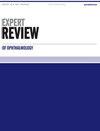干眼症研究进展
IF 0.9
Q4 OPHTHALMOLOGY
引用次数: 0
摘要
干眼症 "的定义随着时间的推移而不断成熟和演变,其动因是技术、知识和对该疾病的理解不断进步。当 TFOS DEWS 于 2007 年首次提出定义时,它被定义为 "泪液和眼表的多因素疾病,导致不适症状、视觉障碍和泪膜不稳定,并可能对眼表造成损害。2017 年,同一小组在定义中增加了'泪膜失去平衡'、'高渗透性'、'炎症'和'神经感觉异常'等概念。所有这些使这一复杂的多因素疾病的定义更加完整[1]。2017 年,亚洲干眼症协会(ADES)在其干眼症定义中描述并强调了 "泪膜不稳定 "的概念,从而创建了一种更简单的分类方法,以简化对这些患者的诊断和管理[2]。如今,得益于大量的研究和不同学会的努力工作,干眼症这一高度复杂的疾病变得更加清晰,人们对干眼症的多因素特征有了更好的理解,对泪腺功能单元(LFU)的概念及其在产生和维持健康眼表泪膜中的作用也有了更好的认识[3,4]。本文章由计算机程序翻译,如有差异,请以英文原文为准。
Advances in dry eye
The ‘Dry Eye’ definition has matured and evolved over time motivated by advances in technology, knowledge, and understanding of the disease. When TFOS DEWS first presented a definition in 2007, it was defined as a ‘multifactorial disease of the tears and ocular surface that results in symptoms of discomfort, visual disturbance and tear film instability with potential damage to the ocular surface.’ In 2017, the same group added to the definition the concept of ‘loss of homeostasis of the tear film,’ ‘hyperosmolarity,’ ‘inflammation,’ and ‘neurosensory abnormalities.’ All these made a more complete definition of this complex and multifactorial condition [1]. In 2017, the Asia Dry Eye Society (ADES) describes and emphasizes the concept of ‘unstable tear film’ in their definition of dry eye creating a simpler classification oriented to creating a simpler diagnosis and management of these patients [2]. Nowadays, thanks to proliferative research and hard work of different societies to try to bring clarity to a disorder with a high level of complexity, the multifactorial characteristic of Dry Eye Disease is better understood, as is the concept of the lacrimal functional unit (LFU) and its role in the production and maintenance of a healthy ocular surface tear film [3,4].
求助全文
通过发布文献求助,成功后即可免费获取论文全文。
去求助
来源期刊

Expert Review of Ophthalmology
Health Professions-Optometry
CiteScore
1.40
自引率
0.00%
发文量
39
期刊介绍:
The worldwide problem of visual impairment is set to increase, as we are seeing increased longevity in developed countries. This will produce a crisis in vision care unless concerted action is taken. The substantial value that ophthalmic interventions confer to patients with eye diseases has led to intense research efforts in this area in recent years, with corresponding improvements in treatment, ophthalmic instrumentation and surgical techniques. As a result, the future for ophthalmology holds great promise as further exciting and innovative developments unfold.
 求助内容:
求助内容: 应助结果提醒方式:
应助结果提醒方式:


